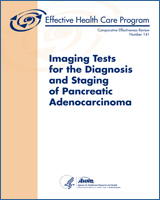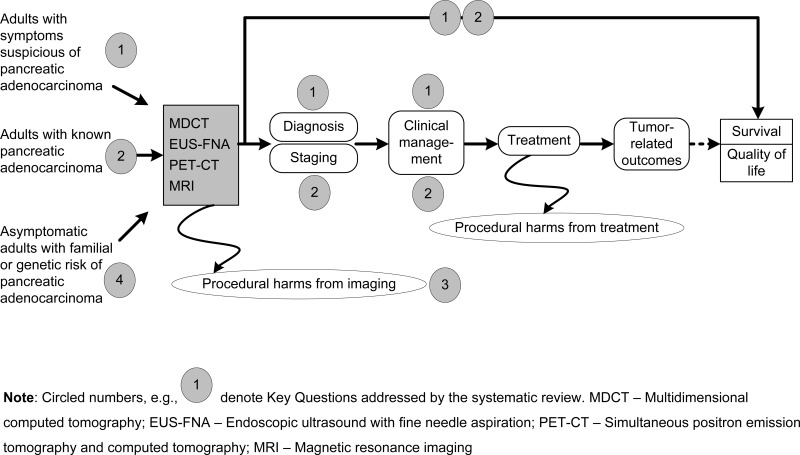From: Introduction

Imaging Tests for the Diagnosis and Staging of Pancreatic Adenocarcinoma [Internet].
Comparative Effectiveness Review, No. 141.
Treadwell J, Mitchell M, Eatmon K, et al.
Rockville (MD): Agency for Healthcare Research and Quality (US); 2014 Sep.
NCBI Bookshelf. A service of the National Library of Medicine, National Institutes of Health.
